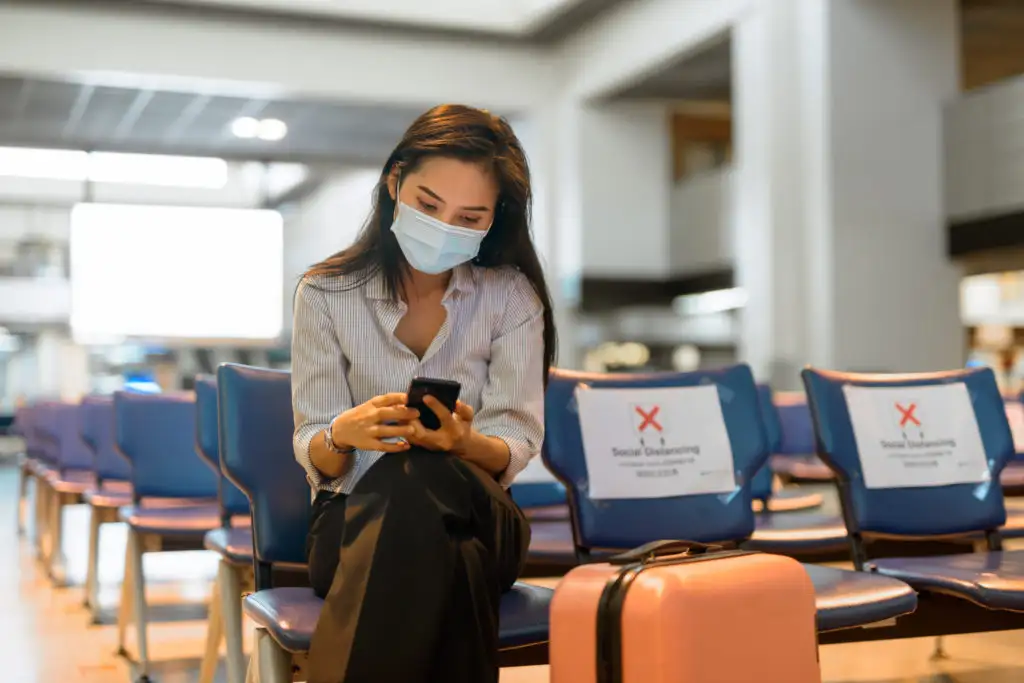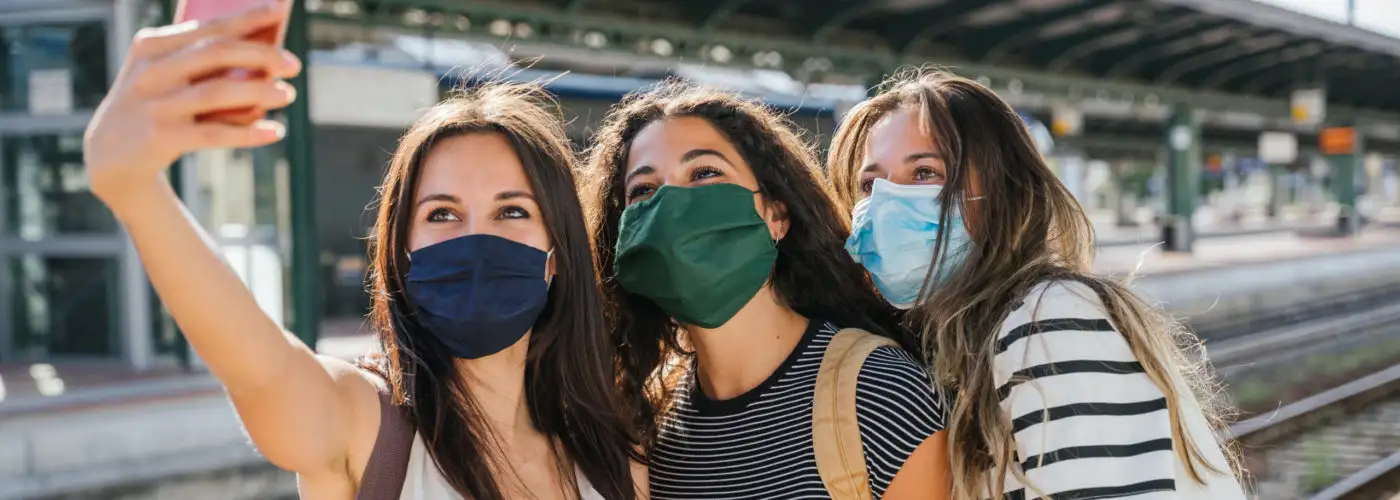Heading out on a trip in 2022 looks vastly different than it did in 2019. Aside from the obvious changes (like wearing a mask), there are a few things you should do differently when traveling that you might not have thought of.
Download the Airline App

The last thing you might want is yet another app on your phone, but downloading your airline’s app can save you a lot of time and hassle. Many airlines now offer dedicated apps for passengers to upload mandatory travel documents (such as vaccine cards and negative COVID-19 tests). One such app, used by carriers including American Airlines and Alaska Airlines, is VeriFLY. If you download this app and upload your documents (including a scan of your passport) you can skip the long check-in lines at the airport for international flights and check-in online.
Get to the Airport Early
If you can’t upload your documents ahead of time, make sure you get to the airport early, as it’s unlikely you’ll be able to check in and get a boarding pass for an international flight without having everything verified.
Since everyone on your flight will likely be in the same situation, expect long lines as documents are checked and tickets are issued. You’ll probably want to show up close to the recommended three hours before your flight for international trips to make sure you have enough time to check in and get through security.
Buy Travel Insurance
If pandemic travel has taught us anything, it’s to be prepared for anything. Border closures, new variants, or testing positive are all travel eventualities that you need to be ready for. Get travel insurance that will cover COVID-related cancelations and you’ll be ready to face any trip snags that may arise.
Pack a Meal/Snacks

Staffing shortages and supply chain issues have caused long lines, limited options, and complete closures at many airport eateries. If you’re counting on being able to eat at the airport during a long layover, you should bring your own food rather than rely on airport restaurants.
Pack a refillable water bottle (most airports have bottle refill stations) along with plenty of snacks or even a complete meal. Peanut butter sandwiches are an easy-to-pack meal that don’t require refrigeration or reheating (or use almond butter if you’re worried about peanut allergies nearby). Other good options for a warm meal include a packet of instant oatmeal or cup of soup (just buy a cup of hot water from a coffee shop). If you want to bring something to eat that needs to stay refrigerated, freezing sliced up fruit is a good alternative to ice (ice or ice packs won’t make it through security if they aren’t frozen solid), plus you’ll have a bonus snack when they thaw. A small insulated lunchbox can also keep items at the perfect temperature.
Check the COVID Rules at Your Destination
In addition to knowing entry requirements at your destination, be sure to check local COVID-related rules before you leave. This way you’ll know if you’ll need proof of vaccination to dine indoors (and if you’ll need a certain app for verification), if masks are required outdoors, etc. Note that some destinations have strict punishments (including fines) for visitors who don’t follow these rules, so you’ll want to be sure you have the most up-to-date information.
Have an Emergency Quarantine Plan
No one wants to catch COVID on their vacation, but it happens. If you test positive while traveling, you’ll have to quarantine for a minimum of five days, or potentially even longer. Make sure you have an emergency quarantine plan in place in case you get stuck away from home.
This plan might involve packing your laptop so you can work remotely, preemptively arranging to extend child/pet care, and budgeting for additional hotel/travel expenses (or taking out trip delay/interruption insurance).
Discuss Group Comfort Levels Before Booking

Between deciding on activities and accommodating different budgets, group travel could be difficult before the pandemic. Now, you’ll need to factor in the comfort level of your companions when planning a trip. Before making any firm plans, grab your group and have a discussion about what everyone is willing to do while traveling. Some members of the group may not feel comfortable dining indoors, for example, and you’ll want to know that before you book a trip.
Make a Return From Travel Plan
The Centers for Disease Control and Prevention (CDC) recommends that all travelers to the United States get tested for COVID 3-5 days after travel. Unvaccinated travelers should test and also self-quarantine for a full five days after travel.
Be sure to make a plan for testing after you get home, as well as find out what (if anything) will be required for you to return to your office after international travel if necessary.
You can order four free at-home COVID tests to be shipped directly to your house from COVIDtests.gov. Note that these tests can be used to test after returning home from travel, but they do not qualify to be used for re-entry into the United States.
You Might Also Like:
• Japan Is Finally Reopening for Tourism• Do You Need to Be Vaccinated to Fly?
• US to End Air Travel COVID-19 Testing Requirement
• How Risky Is Traveling Without a Mask Mandate?
• When Can I Travel After Testing Positive for COVID-19?
We hand-pick everything we recommend and select items through testing and reviews. Some products are sent to us free of charge with no incentive to offer a favorable review. We offer our unbiased opinions and do not accept compensation to review products. All items are in stock and prices are accurate at the time of publication. If you buy something through our links, we may earn a commission.
Related
Top Fares From
Today's Top Travel Deals
Brought to you by ShermansTravel
Shop and Save with Country Inns...
Patricia Magaña
 Hotel & Lodging Deals
Hotel & Lodging Deals
$229 -- Chicago: Discounted Rates and...
Francesca Miele
 Hotel & Lodging Deals
$229+
Hotel & Lodging Deals
$229+
$188 -- Honolulu: Save on Oceanview...
Abigail Lamay
 Hotel & Lodging Deals
$188+
Hotel & Lodging Deals
$188+




